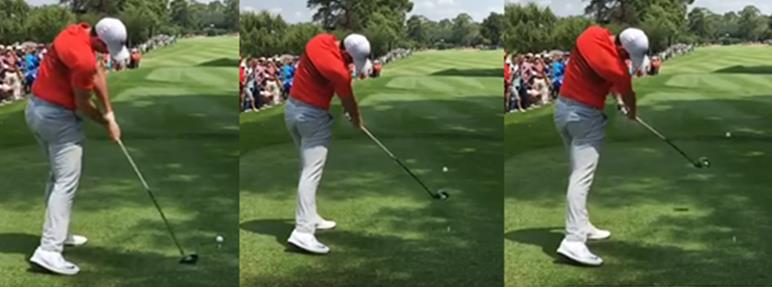Rory McIlroy’s recent rib fracture.
Could his fabled fast hips have been the downfall of his ribs?
Read on for an analysis you will read nowhere else.
During the recent couple of weeks he had between golf seasons, Rory hit balls for hours at a time, testing new clubs. The result? What appeared to be a persistent pain in the back but has now been diagnosed as a rib fracture. It will keep him off golf and some of the big events he was scheduled to play in, with speculation now arising about the likelihood of recovery by the 2017 Masters event.
The best way to scientifically analyze a topic is by first finding out what research already exists on the subject. Believe it or not, these days one can find research on every imaginable topic in golf. So, sure enough, someone has researched stress fractures of the ribs in golfers (stress fractures result from repeated loading over time)! A paper titled “Stress fractures of the ribs in amateur golf players” by Lin, Chou and Hsu, states that “Stress fractures of the ribs are sometimes seen … in patients with a history of playing golf enthusiastically.” Surely one can consider Rory as having played golf “enthusiastically” in recent weeks.
The researchers studied 11 golfers whose chief complaint was chest pain. Six of the participants (all right-handed) had right side rib fractures, while eight had left side rib fractures (three had two fracture sites). It was discovered from biomechanical analysis that the bending forces placed on the ribs was located at their back ends (posterolateral segments), where the fractures tended to occur. The researchers thus stated that “Overuse, poor technique and inadequate stretch will probably lead to stress fracture of the rib.”
Another study “Stress fractures in athletes: review of 196 cases” by Iwamoto and Takeda, which assessed all stress fractures in a variety of athletes found that stress fractures of the ribs was the second highest type of stress fracture, and was seen in baseball, rowing and tennis more than in other sports they studied – one might thus assume the mechanism of injury in those sports is similar to that seen in golf.
Finally, a paper on rib stress injury prevention published by Princeton University’s department of athletic medicine states that, “Symptoms of rib stress reaction or fracture may include increased pain with … reaching for something such as a “doorknob”, resisted shoulder adduction…When athletes get tired, they may start to “round” or “hike” their shoulders which, puts a lot of stress… The program for rehabilitation involves flexibility training followed by strengthening the muscles of the upper back.
Basically, then, it becomes apparent that when the shoulders become rounded (protracted), the shoulder blade (scapula) is pulled closer to the ribs, and thus repeated compressive stress is placed on the ribs as strong muscles pull the scapula forward, which can then cause rib fracturing. It should also be noted that loads on body parts increase with speed, so injury is far more likely during the downswing rather than the backswing.
What is amazing is that researchers of all sporting activities always take for granted that amateur golfers acquire “poor technique” injuries, while skilled professionals only get injuries from overuse. That is absolutely untrue because, especially in golf, how do we know that the technique used by professionals – when no two even use the same movement – is ideal? The golf swing has never been analyzed in an objective, holistic manner, and certainly no-one has ever thought to assess the movement as a function of human joint capabilities. No siree. Golfers are simply told “shift weight” or “cock the wrists” but no one knows how those actions affect the major joints of the body, and indeed whether those body parts are even designed to make the movements or bear the loads we ask of them!

Now look at Rory (from a video https://www.youtube.com/watch?v=bUtO4jkQJwo) coming into and going past impact at his super-human speed. The earlier and faster his hips rotate towards target during the downswing, the more rounded-forward both shoulders become, especially the trail one. Then, when the arms get flung forwards towards the ball at a very rapid rate, as the trail elbow straightens, the shoulders protract even more. Thus a case of fast hips = sore ribs!
Only one swing has ever been developed keeping the design constraints of the joints in mind, and that swing produces hip rotation from closed at the top to square at impact, so that the shoulders are never pulled into excessive protraction and the arms are never flung far from the body at impact!


